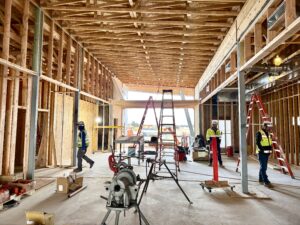In EVstudio’s structural engineering practice this question comes up almost every week. In contemporary construction, a ufer is a concrete encased ground electrode, which is most often a 20 foot long piece of #4 rebar cast into a foundation wall that will protrude from the top of wall so that the structure’s electrical system may attach to it. Technically this falls within the realm of electrical engineering, but enters the realm of structural engineering because the 2008 National Electrical Code requires an installation observation. Because the structural engineer typically will already need to be present on site at some point to observe the rebar construction in the foundation walls many building departments are happy to pass the additional liability on to the structural engineer and require them to observe and document the ufer installation as well.
The ufer was invented during World War II by Herbert Ufer, who was tasked with finding a cheaper alternative to the current method of grounding explosive ordinance storage structures against lighting strikes. The previous grounding method required driving hundreds of feet of electrical ground into the poorly conductive soils found in Arizona. Ufer discovered that due to the naturally high ph levels in concrete (uncured “wet” concrete is caustic and will burn human skin on contact*) the readily available supply of ions will conduct electricity better than almost all soils. The interaction of steel and concrete provide a better ground than the interaction of copper wire and concrete so it was natural connection to utilize the steel reinforcing bars already required of most foundations.
* The author has first-hand knowledge of the validity of this claim.










